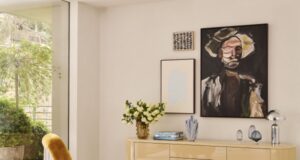
Thatched roofs are made from dried plant stalks. While extremely uncommon in modern house roofs, thatch is a popular choice for outdoor structures like pergolas.

What is thatch?
A thatch roof is one made from overlapping bundles of dried plant stalks. Although roofs made from thatch are now less common in developed countries, these plant stalks were once commonly used to create roofs for homes in the UK, Europe and Scandinavia. Outside of Scotland, where seagrass was used, the plant stalks were often a by-product of food grains like rye, barley, wheat and oat.
Before the industrialisation of the farming industry, grain stalks grew much taller than they now do – the current use of nitrate on soil weakens plant stems. Thatch is still used in many parts of the world and in dry, mild climates, it can also be used to build walls.
Why install thatch?
Thatch is undergoing a small revival in some parts of the world as people rediscover its benefits and attempt to preserve the look of heritage buildings – although it’s very rare to find thatch roofs in Australia.
Thatch is an ecologically sound roofing option, as it uses natural and renewable materials and requires very little in terms of processing to reach a usable state. Thatch is also weatherproof, as long as the roof has a decent pitch and the thatch is installed properly – the prevalence of thatch roofs in cold, damp places like Scandinavia and the Scottish isles is a testament to this.
Despite its many strong points, there are also plenty of things which work against thatch as a roofing option for houses. These include its high flammability, its tendency to attract nesting birds, vermin, rot and mould, and the constant maintenance it requires to keep it sound. It’s also likely to be very complicated to get planning permission for a thatch-roofed house, and to have it insured.
In Australia, thatch is far more commonly used as an attractive, rustic roofing option for things like pergolas and outdoor shading than it is for house roofing.
Where is thatch found?
Thatch can be used throughout Australia, but is almost always installed in things like pergolas or rotundas as a visual feature.
|
Advantages
|
Disadvantages
|





